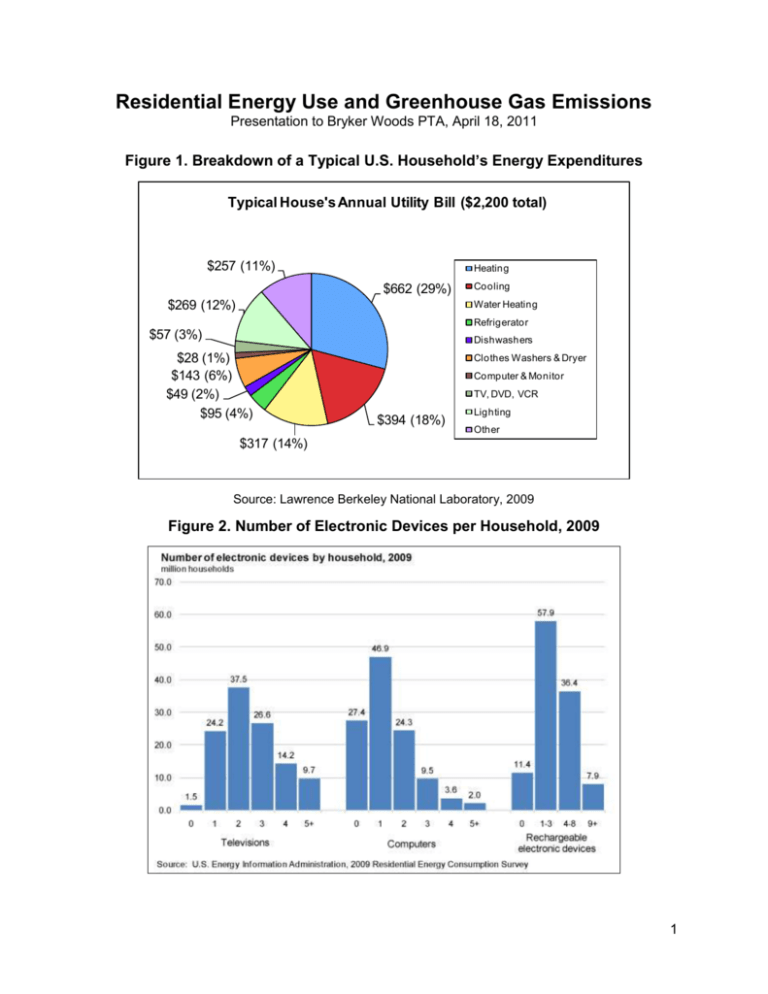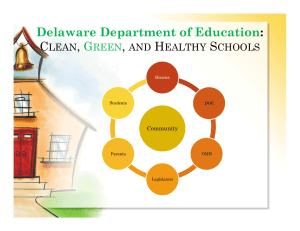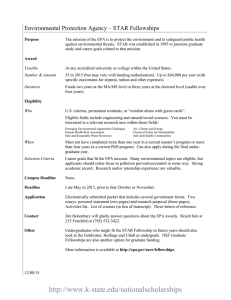Residential Energy Use and Greenhouse Gas Emissions
advertisement

Residential Energy Use and Greenhouse Gas Emissions Presentation to Bryker Woods PTA, April 18, 2011 Figure 1. Breakdown of a Typical U.S. Household’s Energy Expenditures Typical House's Annual Utility Bill ($2,200 total) $257 (11%) Heating $662 (29%) $269 (12%) Cooling Water Heating Refrigerator $57 (3%) Dishwashers $28 (1%) $143 (6%) $49 (2%) $95 (4%) Clothes Washers & Dryer Computer & Monitor TV, DVD, VCR $394 (18%) Lighting Other $317 (14%) Source: Lawrence Berkeley National Laboratory, 2009 Figure 2. Number of Electronic Devices per Household, 2009 1 Figure 3. Comparison of Energy-related CO2 Emissions per Capita Tonnes CO2 per Capita 1 30.00 27.35 25.00 20.32 19.93 20.00 15.91 15.00 10.00 14.72 8.07 7.90 4.73 4.52 5.00 3.17 2.58 2.05 1.23 1.16 l In di a Af r ic a Br az i Te xa s Au 2 st Un ra lia ite d S No ta te rth s Am Tr er av ica is Co un M ty id 3 dl e Ea st Eu ro pe Ch in a Ce As W nt ia o rld ra & l& O c So ea ut ni h a Am er ica - Geographic Jurisdiction Source: City of Austin, 2009 What Can You Do? At Home At School Go on an Energy Hog Scavenger Hunt and root out energy-saving opportunities. Integrate energy education into your curriculum. Visit: DOE’s Teach and Learn and the National Energy Education Development Project. Learn online with energy quizzes, game, and tips. Visit: EPA’s ENERGY STAR Kids and DOE’s Kids Saving Energy. Take the Change the World, Start with ENERGY STAR pledge. Be a model of energy conservation. Educate yourself on ways to improve the efficiency of your home by getting an energy audit. Visit: Austin Energy’s Home Performance with ENERGY STAR to find out about rebates and local contractors. Find out if your school is an energy winner or loser using EPA’s measurement and tracking tool, Portfolio Manager. Plant a shade tree to reduce your home’s A/C needs and help clean the air. Empower your students to be good energy and environmental stewards by joining Watt Watchers. Questions? Please contact Jennifer Clymer at jcregar@gmail.com. 2











